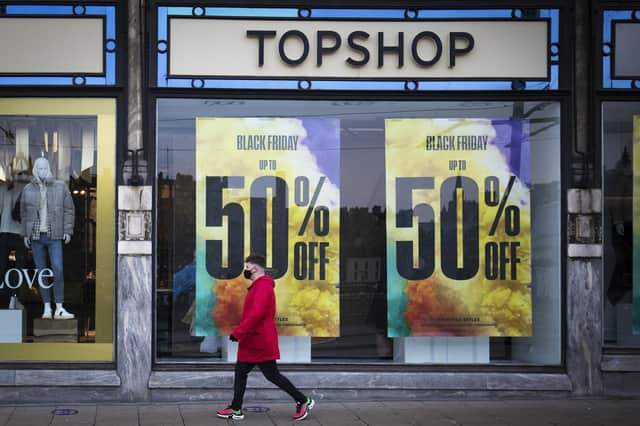Analysis: End of an era as Topshop to go online-only


They were once the destinations of choice for generations of teenage girls on Saturday afternoons, crowding into changing rooms to try on affordable fashions for their weekend socialising.
Now clothing chains Topshop and Miss Selfridge look set to disappear from the high street to go online-only as the brands are snapped up by online retail giant Asos.
Advertisement
Hide AdAdvertisement
Hide AdThe brands, part of Philip Green’s Arcadia empire, have been bought out by Asos and are due to become part of the firm’s internet retail operation, with Topshop’s 18 Scottish stores set to close, with the loss of hundreds of jobs, alongside the remaining branches of Miss Selfridge, which had downsized its store portfolio considerably in recent years. In statements issued this morning, neither Arcadia, nor Asos mentioned the physical stores. The deal will see Asos pay £265 million for the brands – which also include sub-brand Hiit – and a further £30m for the stock.
Professor John Colley, associate dean of Warwick Business School, describes the deal as “another nail in the High Street's coffin”, coming just days after Boohoo bought Debenhams and entered exclusive talks to buy other parts of the Arcadia empire, such as Dorothy Perkins – with those brands also set to move entirely online.
He says: “Boohoo and Asos know a good deal when they see one. The purchase price for these brands was low, allowing them to acquire the stock at a fraction of the cost and close poor performing stores. That means the risk levels are fairly low too if the sites fail to pull in online buyers.”
However, he points out that, while long-term fans of the brands are likely to stay loyal, the new owners will have to invest heavily to “reinvigorate these brands from the past to make them appeal to a new audience so they have a sustainable future.”
Indeed, despite Asos chief executive Nick Beighton describing the move as a step towards Asos's mission to become “the number one destination for fashion-loving 20-somethings throughout the world”, the main problem for Topshop and Miss Selfridge was that its core market – the teen and twenty-something girls who had flocked to its stores in the 1990s and 2000s – are no longer attracted to its wares.
Instead, they opt for cut-price fast fashion brands such as H&M, TK Maxx and Primark, leaving Topshop for an older generation of women who had grown up wearing its clothing.
Topshop became known for its cutting edge fashion in the 1990s under the leadership of brand director Jane Shepherdson. By the 2000s, it was touting plans to expand to America, with its New York store opening attracting queues from the early hours of the morning.
Yet, in the past few years, it has lost that appeal, overtaken by slicker online offerings and similar styles at a cheaper price. For them, it may not be too much of a loss.
Advertisement
Hide AdAdvertisement
Hide AdFor teenagers of the 1990s, however, the departure marks the end of an era.
